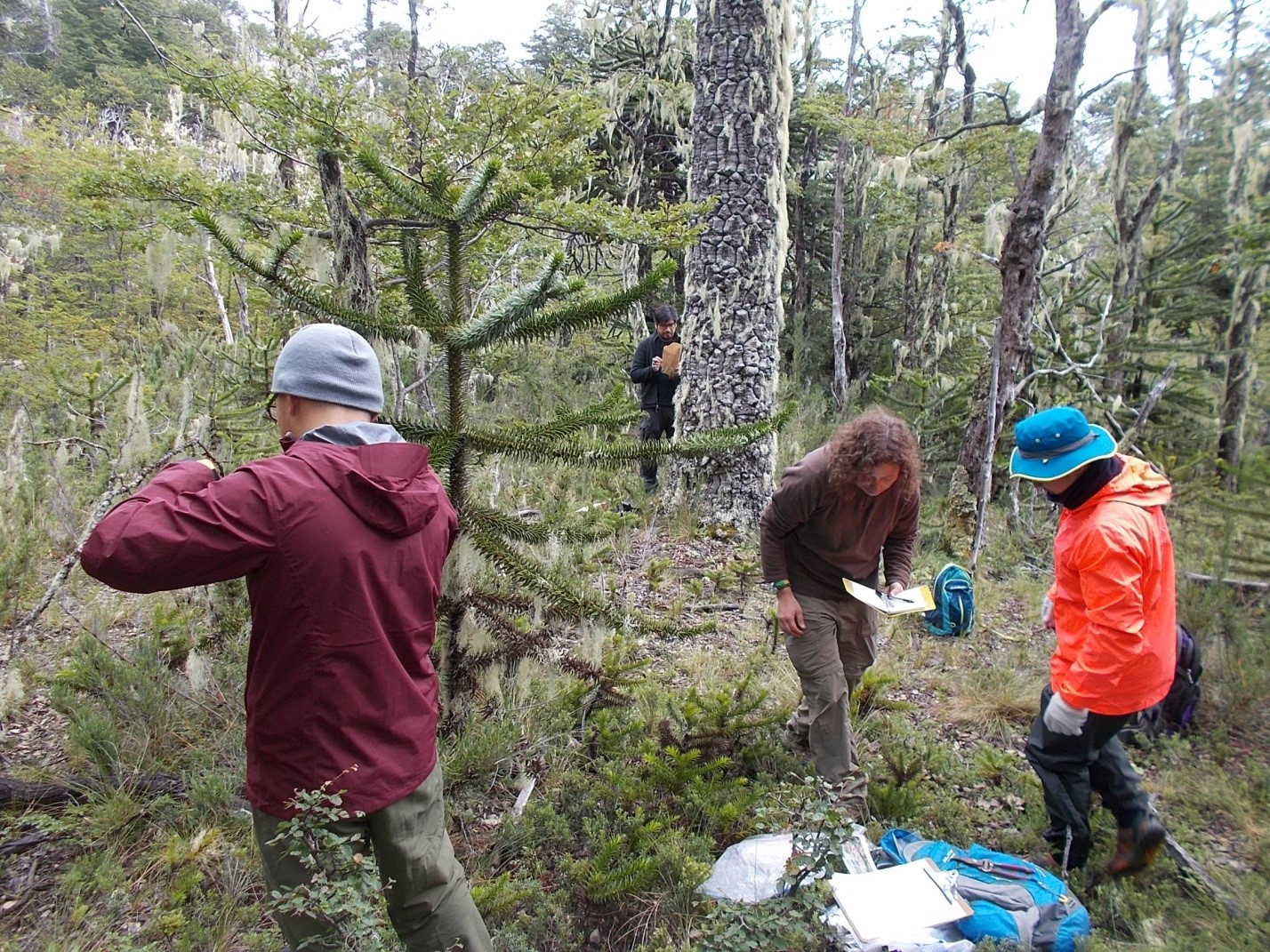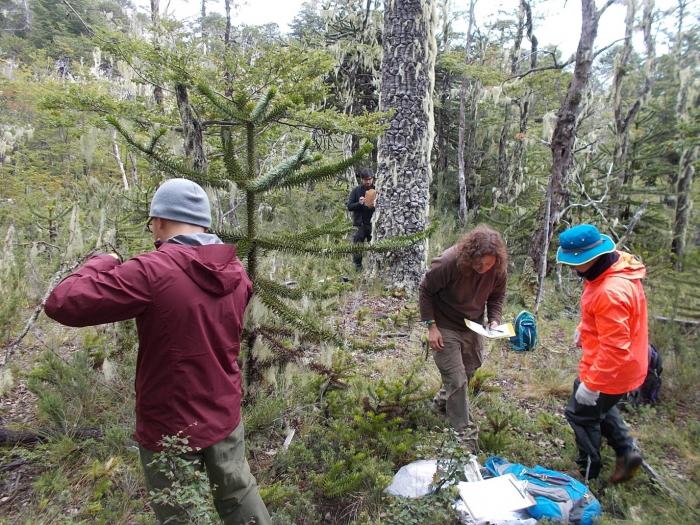Mycota of the Araucaria and Nothofagus forests
Following the field sampling in the Atacama desert (previous post), the GoLife team flew to southern Chile to collect in the monkey puzzle tree (Araucaria araucana) and southern beech (Nothofagus dombeyi and N. pumilio) forests in the Coastal Mountain Range and in the south-central Andes.
In contrast to most temperate forests in the Northern Hemisphere, South America’s temperate forests have developed in isolation from other temperate forests and a large proportion of species, including the dominant trees mentioned above, are endemics, that is they do not occur in other regions. Araucaria is particularly unusual for its morphology, restricted distribution, and for being able to reach 2000 years of age. The GoLife project investigates the fungal component of these unique communities with the goal of discovering novel evolutionary lineages.
Photo captions:
- A forest of Araucaria araucana with the lichen Protousnea magellanica hanging from the branches in the Nahuelbuta National Park in the Araucanía region of Chile.
- The GoLife team in action with principal investigator Elizabeth Arnold (middle) collecting plants with students and local representative Reinaldo Vargas (back) sampling lichens.
- Forests of Nothofagus dombeyi and N. pumilio in the Mocho-Choshuenco National Reserve in the Los Ríos region (Photos: József Geml)



